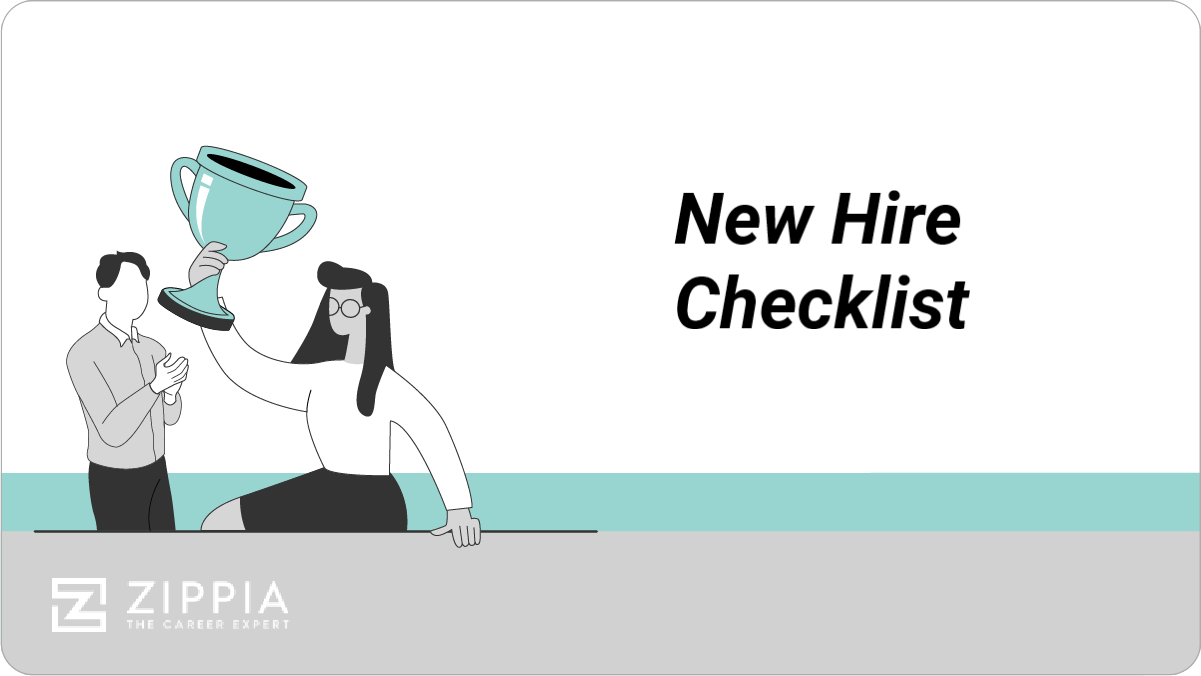Summary. To create a successful checklist for a new hire, break your checklist down into time periods based on priorities and make your objectives obtainable.
When a new employee shows up for their first day, a checklist of action items is critical to easing the transition. However, it can feel daunting to create such a checklist. After all, there are so many things that need to get done that a list may seem overwhelming.
This does not have to be the case. If you want your employees to reach their potential as soon as possible, you will want to invest in their onboarding process and a robust checklist will go a long way.
Key Takeaways:
-
Consider action items on a new hire checklist list that can be done before they arrive.
-
Use SMART goals to make your checklist fair and reasonable.
-
Only the time sensitive important items should get done on the first day.
-
Remember that the goal is to make the new employee feel confident in their abilities.

How To Make A Checklist For New Hires
To make a checklist for new employees, break down what needs to get done based on time sensitivity. This will help you prioritize the most important actions while saving other items for later.
It can be helpful to segment a checklist for your new hire into the following time periods:
-
Before the new employee starts. This is where you can be proactive and take care of anything before your new hire joins your organization.
-
The first day. This will be anything your new hire must complete on their first day before they can officially begin work.
-
The first week. The first week should be filled with tasks that your new employee can fulfill while they learn about their new job.
-
The first month. After the first month, you can begin to increase your new employee’s workload as they feel more comfortable with their job responsibilities.
-
The first 90 days. By end of the first three months, you and your new hire should feel confident in their abilities to act as an independent, fully contributing member of your organization.
It is important that your checklist remains realistic and fair. To achieve this, consider assigning quantifiable tasks and set up periodic check-ins to evaluate your new employee’s progress.
Understand that this is a process. A new employee checklist should be a guide that helps build up your new hire, not one that stresses them out or tears them down. The goal is to have them become an independently functioning member of your team that you can trust.
Example Checklist For New Employees
Your checklist for your new employee should be specific to your needs. However, consider the following example to see how you can prioritize and focus the development of your new hire:
-
Before the new employee arrives. Try breaking up this part of the checklist further into what can get done two weeks before your new hire’s first day and what can get done on the first day before they arrive.
-
Two weeks before. The two week period before your new employee shows up is a great opportunity to prepare anything to help them succeed.
-
Assign a mentor who will support your new employee throughout their onboarding.
-
Prepare a list of job expectations that focuses on outcomes instead of tasks.
-
Get feedback from staff about current onboarding process and make necessary changes.
-
Create a weekly goal plan that maps out progress for your new employee.
-
Order essential items such as computers or business cards.
-
-
Before their first day. When their first day arrives, you can schedule specific actions items you want to accomplish.
-
Assign a colleague for your new employee to shadow and observe.
-
Prepare new hire’s work station.
-
Set up an email and any other internal system accounts.
-
Have a copy of the employee handbook ready.
-
-
-
New employee’s first day. On the first day you want to complete any task that is absolutely necessary for your new hire to feel welcomed and considered an employee.
-
Have someone ready to greet your new employee.
-
Arrange a lunch.
-
Go over job expectations.
-
Give them a name tag.
-
Prioritize essential paperwork such as tax and legal documents.
-
Introduce your new employee to their mentor.
-
Make sure your new employee’s work station and technology are functioning properly.
-
-
New employee’s first week. In the first week, you have the opportunity to bring your new employee up to speed on their job responsibilities and the processes of your business.
-
Have end of day reviews to understand your new employee’s level of comfort.
-
Assign them on-the-job training.
-
Give them a manageable project to work on.
-
Treat them to free or subsidized lunches.
-
Complete all necessary paperwork and compliance trainings.
-
-
New Employee’s first month. By now you can see how well your employee handles their job while still offering some additional guidance.
-
Check in to review progress with goals.
-
Increase responsibilities each week.
-
Provide additional training or reference materials.
-
Educate them on the big picture goals of your organization and how your new employee contributes.
-
-
Your new employee’s first 90 days. Within three months, you should have a better idea of how your new hire is performing.
-
Schedule monthly check-ins to evaluate progress.
-
Assign them a major project or responsibility.
-
Challenge them with multiple tasks.
-
Ask them for feedback on the onboarding process.
-
Remember that this checklist is just an example. You will want to fill yours with specifics that are relevant to the success of your employee.
Tips For Onboarding New Hires
There is a lot going on when you have a new employee, so consider the following tips to help make sure your checklist aids you during this transitional process:
-
Use SMART goals. SMART goals are specific, measurable, attainable, relevant, and time-bound. This helps keeps the goals you assign your new employee fair and realistic.
-
Create a 30/60/90 day plan. A 30/60/90 plan is a great way to break down the first three months of your new hire’s onboarding process. Each month is broken down into specific objectives that integrate your new employee into your organization.
-
Be clear on expectations. When you discuss how you see your new employee’s onboarding process playing out, make sure that your expectations are clearly understood. This allows both of you to be more objective in your discussions moving forward.
-
Be available and communicative. You don’t want to just give your new employee a list of items to accomplish and then abandon them. To increase motivation, be present throughout the process and show them you are invested in their success.
-
Endorse a growth mindset. Allow your employee to feel comfortable with mistakes and challenges by reframing them as opportunities to grow. This will help both you and your new employee focus on development and progress instead of failure.
-
Listen and seek out feedback. Your checklist will not be perfect. At all stages, listen to how others are reacting to the checklist and consider making adjustments.
New Hires Checklist FAQ
-
What should be on a new employee checklist?
A new employee checklist should contain specific action items, SMART goals, and integral resources. When you have a new employee, you want them to become a functioning member of your team as soon as possible.
This requires certain actions, which can be helped along when they are specific. The same goes for goals. You want to be clear on your objectives so that neither you or your new employee are confused by your checklist.
For similar reasons, you want to provide the resources, such as technology, employee handbooks, and paperwork, that give your new employee a baseline position to build from.
-
What is the first thing to do with the new employee?
The first thing you should do with a new employee is greet them and bring them to their work station. This means you have to prepare ahead of their arrival.
Make sure you have someone ready to greet the new employee so that they feel immediately welcomed. Also, make sure their workstation is functioning properly, so check all require technology, such as their computer, email, and other login information.
-
What are the most common mistakes during the onboarding process?
The most common mistakes during the onboarding process are a lack of cohesion, clarity, and resources. A bad onboarding is one where an employer just simply throws a new employee into a situation with minimal guidance. This leads to the new hire feeling overwhelmed, which can manifest in low morale and productivity.
Even when an employer attempts to onboard a new employee, their efforts can be futile if they are not clear on expectations and if they do not provide the proper guidance that helps acclimate an employee to their role.
This is why is it so important that you make sure you are specific in your aims with your new hire and constantly check in on their progress.
References
-
Office of Personnel Management – Supervisor’s Toolkit For Onboarding
-
Office of Personnel Management – Onboarding Quick Start Guide For The Hiring Manager
New Employee Checklist Infographic





